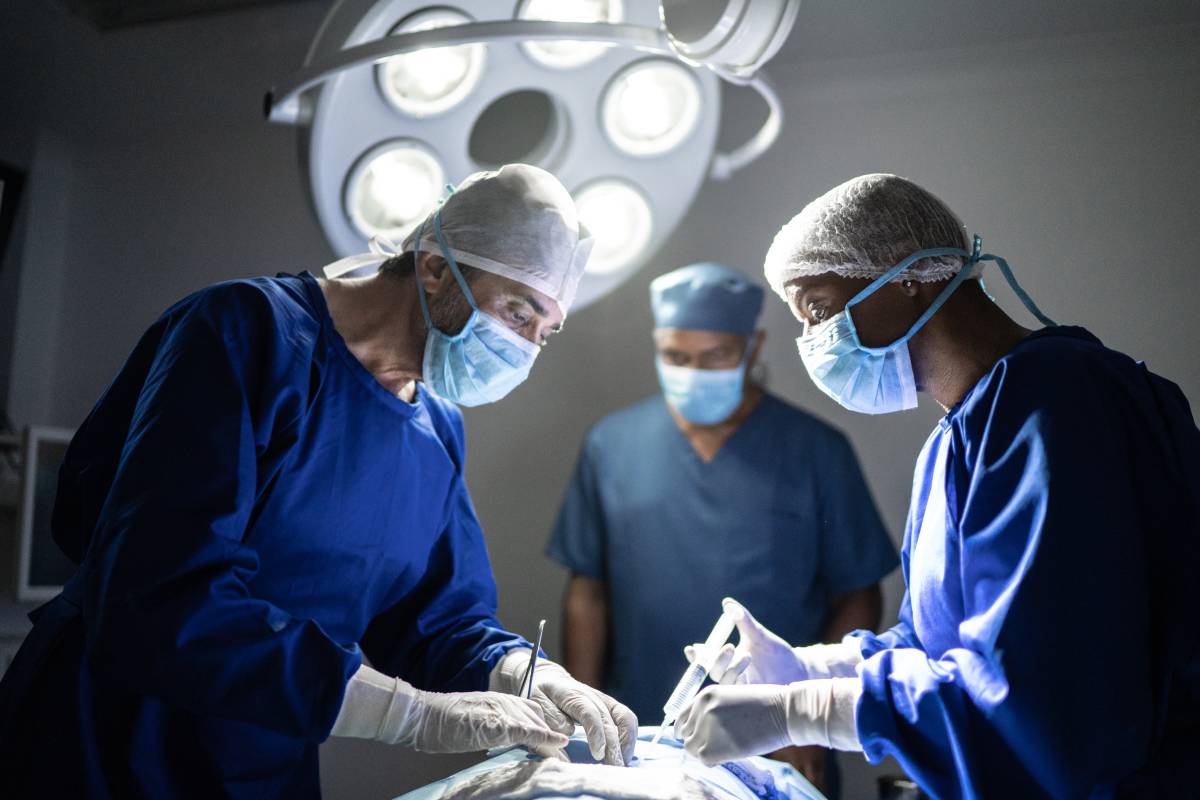Anesthesia and surgery can cause a dramatic decline in core temperature, which naturally induces shivering. This is the physiological response to a decrease in body temperature involving involuntary muscle contraction in an effort to raise metabolic heat production.1 However, perioperative shivering is associated with delayed wound healing, increased oxygen consumption, catecholamine secretion, and carbon dioxide production which can result in hypoxemia, a risk factor for myocardial ischemia.2 Shivering after spinal anesthesia is a relatively common occurrence, with a reported incidence of up to 65%. Researchers believe this is due to the characteristic of spinal anesthesia where vasodilation is induced; this state prompts a redistribution of heat from the core to peripheral tissues, providing the perfect environment for shivering and hypothermia.2 Management of perioperative or postoperative shivering is valuable for patient outcomes, and researchers have studied pharmacological treatments for it, such as steroids.
In 2022, a group of researchers from Ethiopia put together guidelines for the prevention and management of shivering after spinal anesthesia, with data collected from 18 RCTs, two systematic reviews, and one prospective cohort study, conducted all over the world. They concluded that several available pharmacological treatments can be used to prevent and manage perioperative and postoperative shivering.2
Ketamine, a competitive NMDA receptor antagonist, likely inhibits shivering through its actions on the hypothalamus. This neural structure has been colloquially named, “the body’s thermostat,” for its control of body temperature.3 Being an NMDA antagonist, ketamine can modulate noradrenergic neurons in several neural regions, including the locus coeruleus, which is known to be involved in arousal.4 The downstream β-adrenergic effects, which include increased heart rate, enhanced contraction, and faster relaxation, can also play a significant role in reducing shivering.5 On the clinical side, several studies report ketamine can successfully prevent perioperative shivering after spinal anesthesia.2,4
Dexamethasone is a steroid that prevent shivering through its anti-inflammatory actions.6 Generally, steroids are anti-inflammatory and immune-suppressing, making them candidate drugs for perioperative shivering. Dexamethasone inhibits the release of vasoconstrictors and pyrogenic cytokines, which assist in decreasing the temperature gradient throughout the body.2,7 The 2022 guidelines list several studies which recommend dexamethasone for use in perioperative settings to prevent shivering.2 In a study with 120 patients undergoing surgery with general anesthesia, the group receiving very low doses of dexamethasone had a shivering rate of only 10%, compared to 48% of controls.7 Previous literature had noted detrimental side effects appearing with higher dosages; therefore, this study confirms low-dose dexamethasone is still effective at reducing perioperative shivering.
Magnesium sulfate (MgSO4) is an inorganic salt and a non-competitive antagonist of NMDA receptors. It is believed that MgSO4 reduces shivering through its inhibition of norepinephrine and 5-HT release, neurotransmitters intimately involved in thermoregulation. Mg+2 is a calcium antagonist, giving it a peripheral muscle relaxation effect, which can reduce the intensity and mitigate the overall damage caused by shivering.8 A 2019 study analyzed 35 patients undergoing uroscopies under spinal anesthesia and found MgSO4 significantly reduced the incidence of postoperative shivering.8
Prevention and management of perioperative and postoperative shivering is a crucial part of the surgical process since it can reduce the risk of many harmful outcomes. Based on the results of the 2022 review, postoperative shivering can be mitigated with easily available and economical pharmacological options, including ketamine, steroids such as dexamethasone, and magnesium sulfate. Moving forward, anesthesiologists should consider adding these treatments to their preoperative regimens; however, they should keep in mind the unique comorbidities of the patient and how these might interact with steroids and other medications.
References
- Zhang, Jian, et al. “Dexmedetomidine as a Neuraxial Adjuvant for Prevention of Perioperative Shivering: Meta-Analysis of Randomized Controlled Trials.” PLOS ONE, vol. 12, no. 8, Aug. 2017, p. e0183154. PLoS Journals, https://doi.org/10.1371/journal.pone.0183154
- Amsalu, Hunde, et al. “Evidence-Based Guideline on Prevention and Management of Shivering After Spinal Anesthesia in Resource-Limited Settings: Review Article.” International Journal of General Medicine, vol. 15, Sept. 2022, pp. 6985–98. PubMed Central, https://doi.org/10.2147/IJGM.S370439
- Boulant, Jack A. “Role of the Preoptic-Anterior Hypothalamus in Thermoregulation and Fever.” Clinical Infectious Diseases, vol. 31, no. Supplement_5, Oct. 2000, pp. S157–61. DOI.org (Crossref), https://doi.org/10.1086/317521
- Dal, D., et al. “Efficacy of Prophylactic Ketamine in Preventing Postoperative Shivering.” British Journal of Anaesthesia, vol. 95, no. 2, Aug. 2005, pp. 189–92. DOI.org (Crossref), https://doi.org/10.1093/bja/aei148
- Doste, Ruben, and Alfonso Bueno-Orovio. “Multiscale Modelling of β-Adrenergic Stimulation in Cardiac Electromechanical Function.” Mathematics, vol. 9, no. 15, July 2021, p. 1785. DOI.org (Crossref), https://doi.org/10.3390/math9151785
- Osama Ali, M.D., Islam B. Abd El-Hafez, M. Sc., and Gehan A. Sayed, M.D. “Efficacy of Dexamethasone on Prevention of Post-Operative Spinal Shivering in Comparison with Intravenous Ketamine Plus Midazolam During Elective Cesarean Section.” The Medical Journal of Cairo University, vol. 87, no. June, June 2019, pp. 2285–94. DOI.org (Crossref), https://doi.org/10.21608/mjcu.2019.54394
- Entezariasl, Masood, and Khatereh Isazadehfar. “Dexamethasone for Prevention of Postoperative Shivering: A Randomized Double-Blind Comparison with Pethidine.” International Journal of Preventive Medicine, vol. 4, no. 7, July 2013, pp. 818–24. PubMed Central, https://www.ncbi.nlm.nih.gov/pmc/articles/PMC3775222/
- Omar, Heba, et al. “Comparative Study Between Intrathecal Dexmedetomidine and Intrathecal Magnesium Sulfate for the Prevention of Post-Spinal Anaesthesia Shivering in Uroscopic Surgery; (RCT).” BMC Anesthesiology, vol. 19, no. 1, Oct. 2019, p. 190. BioMed Central, https://doi.org/10.1186/s12871-019-0853-0

